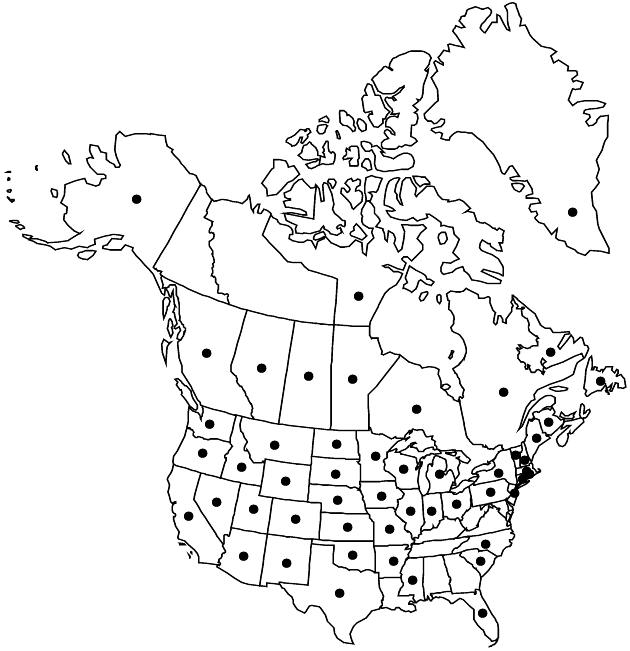Difference between revisions of "Artemisia campestris"
Sp. Pl. 2: 846. 1753.
FNA>Volume Importer |
RevisionBot (talk | contribs) m (Bot: Adding category Revised Since Print) |
||
| (4 intermediate revisions by 3 users not shown) | |||
| Line 8: | Line 8: | ||
}} | }} | ||
|common_names=Field sagewort;sand wormwood | |common_names=Field sagewort;sand wormwood | ||
| + | |special_status={{Treatment/ID/Special_status | ||
| + | |code=F | ||
| + | |label=Illustrated | ||
| + | }} | ||
|basionyms= | |basionyms= | ||
|synonyms= | |synonyms= | ||
| Line 20: | Line 24: | ||
-->{{Treatment/Body | -->{{Treatment/Body | ||
| − | |distribution= | + | |distribution=Alta.;B.C.;Man.;N.B.;Nunavut;Ont.;Que.;Sask.;Alaska;Ariz.;Ark.;Calif.;Colo.;Conn.;Fla.;Idaho;Ill.;Ind.;Iowa;Kans.;Maine;Mass.;Mich.;Minn.;Miss.;Mo.;Mont.;N.C.;N.Dak.;N.H.;N.J.;N.Mex.;N.Y.;Nebr.;Nev.;Ohio;Okla.;Oreg.;Pa.;R.I.;S.C.;S.Dak.;Tex.;Utah;Vt.;Wash.;Wis.;Wyo.;especially mountains and high latitudes;Eurasia. |
|discussion=<p>Subspecies ca. 7 (3 in the flora).</p><!-- | |discussion=<p>Subspecies ca. 7 (3 in the flora).</p><!-- | ||
--><p><i>Artemisia campestris</i> varies; each morphologic form grades into another. The present circumscription is conservative in that only three subspecies are recognized; the subspecies usually can be separated geographically as well as morphologically. Populations in western North America consist primarily of <i></i>subsp.<i> pacifica</i>; east of the continental divide, plants are assigned to <i></i>subsp.<i> canadensis</i> in northern latitudes and to <i></i>subsp.<i> caudata</i> in southern latitudes.</p> | --><p><i>Artemisia campestris</i> varies; each morphologic form grades into another. The present circumscription is conservative in that only three subspecies are recognized; the subspecies usually can be separated geographically as well as morphologically. Populations in western North America consist primarily of <i></i>subsp.<i> pacifica</i>; east of the continental divide, plants are assigned to <i></i>subsp.<i> canadensis</i> in northern latitudes and to <i></i>subsp.<i> caudata</i> in southern latitudes.</p> | ||
| Line 59: | Line 63: | ||
|basionyms= | |basionyms= | ||
|family=Asteraceae | |family=Asteraceae | ||
| − | |distribution= | + | |distribution=Alta.;B.C.;Man.;N.B.;Nunavut;Ont.;Que.;Sask.;Alaska;Ariz.;Ark.;Calif.;Colo.;Conn.;Fla.;Idaho;Ill.;Ind.;Iowa;Kans.;Maine;Mass.;Mich.;Minn.;Miss.;Mo.;Mont.;N.C.;N.Dak.;N.H.;N.J.;N.Mex.;N.Y.;Nebr.;Nev.;Ohio;Okla.;Oreg.;Pa.;R.I.;S.C.;S.Dak.;Tex.;Utah;Vt.;Wash.;Wis.;Wyo.;especially mountains and high latitudes;Eurasia. |
|reference=None | |reference=None | ||
|publication title=Sp. Pl. | |publication title=Sp. Pl. | ||
|publication year=1753 | |publication year=1753 | ||
| − | |special status= | + | |special status=Illustrated |
| − | |source xml=https:// | + | |source xml=https://bitbucket.org/aafc-mbb/fna-data-curation/src/2e0870ddd59836b60bcf96646a41e87ea5a5943a/coarse_grained_fna_xml/V19-20-21/V19_852.xml |
|tribe=Asteraceae tribe Anthemideae | |tribe=Asteraceae tribe Anthemideae | ||
|genus=Artemisia | |genus=Artemisia | ||
| Line 71: | Line 75: | ||
}}<!-- | }}<!-- | ||
| − | -->[[Category:Treatment]][[Category:Artemisia subg. Drancunculus]] | + | --> |
| + | |||
| + | [[Category:Treatment]] | ||
| + | [[Category:Artemisia subg. Drancunculus]] | ||
| + | [[Category:Revised Since Print]] | ||
Latest revision as of 18:24, 6 November 2020
Biennials or perennials, (10–)30–80(–150) cm, faintly aromatic; taprooted, caudices branched. Stems usually 1–5, turning reddish brown, (often ribbed) tomentose or glabrous. Leaves persistent or deciduous, mostly basal; basal blades 4–12 cm, cauline gradually reduced, 2–4 × 0.5–1.5 cm, 2–3-pinnately lobed, lobes linear to narrowly oblong, apices acute, faces densely to sparsely white-pubescent. Heads (pedunculate) in (mostly leafless) paniculiform arrays. Involucres broadly turbinate, 2.5–3(–5) × 2–3.5(–7) mm. Phyllaries (margins scarious) glabrous or villous-tomentose. Florets: pistillate 5–20; functionally staminate 12–30; corollas pale yellow, sparsely hairy or glabrous. Cypselae oblong-lanceoloid, somewhat compressed, 0.8–1 mm, faintly nerved, glabrous.
Distribution

Alta., B.C., Man., N.B., Nunavut, Ont., Que., Sask., Alaska, Ariz., Ark., Calif., Colo., Conn., Fla., Idaho, Ill., Ind., Iowa, Kans., Maine, Mass., Mich., Minn., Miss., Mo., Mont., N.C., N.Dak., N.H., N.J., N.Mex., N.Y., Nebr., Nev., Ohio, Okla., Oreg., Pa., R.I., S.C., S.Dak., Tex., Utah, Vt., Wash., Wis., Wyo., especially mountains and high latitudes, Eurasia.
Discussion
Subspecies ca. 7 (3 in the flora).
Artemisia campestris varies; each morphologic form grades into another. The present circumscription is conservative in that only three subspecies are recognized; the subspecies usually can be separated geographically as well as morphologically. Populations in western North America consist primarily of subsp. pacifica; east of the continental divide, plants are assigned to subsp. canadensis in northern latitudes and to subsp. caudata in southern latitudes.
Selected References
None.
Lower Taxa
Key
| 1 | Perennials; stems 2–5; basal rosettes persistent | Artemisia campestris subsp. pacifica |
| 1 | Biennials; stems 1(–3); basal rosettes not persistent (withering before flowering) | > 2 |
| 2 | Involucres globose, 3–4 × 3.5–5 mm; n of 50°, primarily Canada | Artemisia campestris subsp. canadensis |
| 2 | Involucres turbinate, 2–3 × 2–3 mm; s of 50°, e from Rocky Mountains to coastal North America | Artemisia campestris subsp. caudata |